We need more than air purifiers to clean up Dhaka’s air
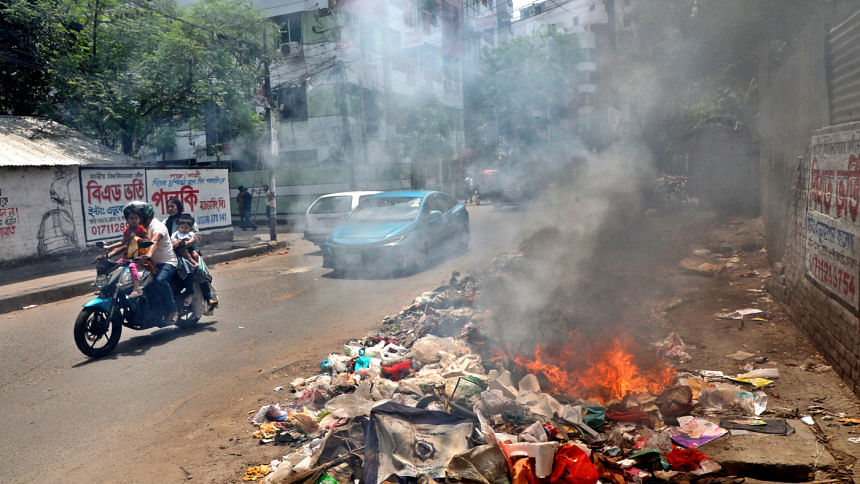
Almost everyone in Dhaka is a doctor. They can walk into a pharmacy and order common medicine for cold, indigestion, or allergies. One of my health-conscious colleagues even recommended taking a daily dose of medicine for allergic rhinitis, regardless of whether symptoms are present. Given Dhaka's high concentration of air pollutants—150 percent above the air quality guideline limit set by the World Health Organization (WHO)—each citizen involuntarily inhales toxins equivalent to 1.7 cigarettes a day. The nagging itchy sensation in our breathing tracts is no fluke.
The apparently well-intentioned prescription of my colleague belies a dangerous problem: a self-suggested remedy that ignores the bigger picture. Similarly, reading about the plan to install smog towers (air purifiers) in Dhaka city makes me reflect on the paradoxical gap between noble intention and the harsh, wider reality.
As many know by now, the Dhaka North City Corporation (DNCC) has recently announced the installation of 25-30 industrial-grade air purifiers, donated by a foreign philanthropist as part of a corporate social responsibility (CSR) initiative. According to media reports, each tower, valued at Tk 50-60 lakh, will be installed under a pilot project that includes options for "limited branding," while the DNCC will cover the electricity bill.
The introduction of pollutant-fighting giant machines sounds surreal in a city that cannot even fill potholes or guarantee pedestrians the right to walk on footpaths. Yet, there is this new hype created around cleaning the air for city residents with just 25-30 air purifiers. The proposition is as ridiculous as setting up an air conditioner inside an oven. Each of these machines can clean approximately 30,000 cubic feet of air per minute. With 25-30 machines, we may be able to purify 45-54 million cubic feet per hour. Even the DNCC administrator says one machine has the strength of 80-100 trees. If that is the case, might it not be more feasible to provide four large trees to 20 houses in an area rather than pursue such an ambitious endeavour?
The technology may be useful for temporarily improving air quality in a hospital or school compound, but it can never be a long-term, large-scale solution. The experiences of New Delhi and Beijing, which have used this Dutch technology for ionising pollutants, can offer some insight. As Dhaka undergoes massive modernisation, we are likely to bear the burden of a construction fiesta for years to come. Old buildings are being demolished to make room for new condominiums and business complexes.
Then, there are the ongoing projects of flyovers, metro lines, airport expansions, underpasses, etc. Factory waste, construction dust, and brick kilns, according to the Department of Environment (DoE), are responsible for 60-70 percent of total air pollution. The next culprit is vehicle emissions. The red alert issued against old, rickety buses belching black smoke is a complete joke, as nobody wants to throw stones at the hives of transport workers. Other sources include burning leaves and garbage, road dust, or smoke from substations and generators that we install to deal with load-shedding. The sources of air pollutants are in plain sight. Yet, instead of addressing the root causes, the DNCC has opted for an initiative that feels less like a cure and more like a cosmetic fix.
Beijing reduced its smog crisis not only through high-tech air filtration systems but also by reforming its overall environmental policies. It shut down or relocated factories, rerouted traffic, enforced strict emission standards, and adopted green policies, including planting millions of trees. If Dhaka wants to replicate Beijing's success, it too needs systemic changes.
The issue with CSR is that companies making the funding often prioritise their own agendas. They rarely include after-service in their contracts. However, these machines need regular maintenance and filter changes, as clogging is a constant issue. DNCC's current reputation for maintenance does not inspire any confidence. Every day, we see underage labourers carrying kitchen waste in open vans. Often, we hear of waste trucks being used to train new drivers, sometimes causing accidents.
The DNCC says it will only bear the electricity bill. Subail Bin Alam and Marzia Mithila, writing for Prothom Alo, estimate that if an air purifier requires 150-250 watts/hour to run per day, each unit would need 1,314-2,190 kWh annually. An average Bangladeshi household uses about 250-300 kWh of electricity per year. If this initiative is turned into a fully fledged project with about 4,250 purifiers across Dhaka city, it would consume as much electricity as 20,000-30,000 households annually. This calls for further feasibility studies.
That said, it's about time we started exploring the source of the problem. Fighting the symptoms may bring publicity, but it brings no real change. For instance, we often hear policymakers insist on using glass jars for water or fountain pens for writing to reduce plastic dependency—yet they allow the plastic industry to thrive. Their lip service simply allows us to be indifferent to environmental issues. What good is pouring water from a jar at a seminar if the bottle that carried the water was plastic? Has the city corporation taken recycling seriously?
We need to implement green policies that address the root causes of pollution. Modernising brick kilns is a priority. We must phase out the traditional, fixed-chimney kilns and impose taxes on those who don't adopt green materials. Financial incentives and strict enforcement of rules are key. Law enforcement agencies must ensure construction companies use dust nets, water sprinklers, and on-site waste management. Loose gravel and soil near trees can be covered with wood chips. While the need for transportation remains endless, we must invest in electric vehicles, create bike lanes, and ensure regular vehicle emission testing.
As citizens, we also need to be aware of our contribution to the crisis. Our household substations, diesel generators, and AC overloads generate significant pollution. Many of us install solar panels just to meet RAJUK compliance. But by adopting newer technology, we can equip our homes and commercial buildings as neighbourhood microgrids. Smart cities around the world are utilising all available surfaces for alternative energy. Our elevated motorways can be layered with solar panels, and our malls and shopping areas can use kinetic pavement to convert pedestrian footsteps into electric energy.
Air pollution is a crisis that cannot be taken lightly. According to the World Bank, air pollution in Bangladesh was responsible for 78,145-88,229 deaths in 2019, accounting for about 20 percent of the country's premature deaths. The economic impact is equally alarming, with air pollution costing the equivalent of 8.32 percent of GDP in 2019.
The facts are self-evident. We need to make community leaders aware of them. For instance, we can request religious leaders to use Friday sermons to create environmental awareness, promote the greening of public spaces, and encourage people to reject vehicles that belch black smoke.
It's easy to dismiss Dhaka as an unliveable city. The challenge for us is to replace that tantrum with the slogan—"Dhaka is everyone's responsibility"—and act accordingly.
Dr Shamsad Mortuza is professor of English at Dhaka University.
Views expressed in this article are the author's own.
Follow The Daily Star Opinion on Facebook for the latest opinions, commentaries and analyses by experts and professionals. To contribute your article or letter to The Daily Star Opinion, see our guidelines for submission.

 For all latest news, follow The Daily Star's Google News channel.
For all latest news, follow The Daily Star's Google News channel. 
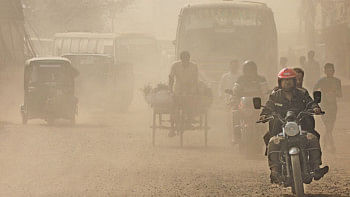

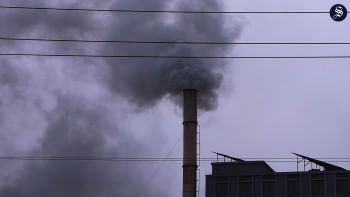




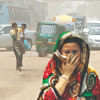


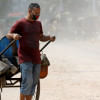


Comments